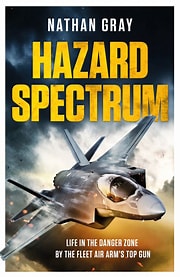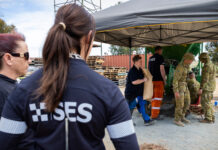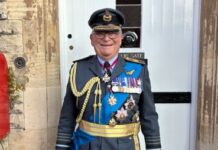
Hazard Spectrum. By Nathan Gray. Headline Publishing Group, London, 2023. ISBN 978-01-03-540251-9
Reviewed by David Hobbs
Nathan Gray served as a fast-jet pilot in the Royal Navy’s Fleet Air Arm for more than two decades before retiring with the rank of Commander. He flew the Sea Harrier, Harrier GR 7/9 and F-35 Lightning and, between flying appointments, qualified as a forward air controller, passed the notoriously difficult Royal Marines’ all-arms Commando Course and qualified as a parachutist.
He deployed for three operational flying tours with RN Harriers in Afghanistan before being selected for an exchange appointment with the US Marine Corps flying AV-8B Harriers. Later he became a test pilot and served with the F-35 Integrated Test Force at NAS Patuxent River in the USA for several years before becoming the first pilot to land an F-35 on HMS Queen Elizabeth.
The text begins by describing a traumatic event that happened near the end of his Sea Harrier course on 5 December 2002 and changed his life. He was carrying out a short take-off in a two-sea Sea Harrier T 8 training aircraft during a temporary detachment from RNAS Yeovilton to RAF Wittering when a small stone or some other substantial piece of debris was sucked into the air intake. It hit a fan blade which broke off, destroyed the engine instantaneously and caused the ruptured fuel tanks around it to explode as the aircraft left the ground. The aircraft rolled rapidly to the right as he ejected but he had just enough space to clear the perimeter fence and a fraction of a second for his parachute to deploy under shock loading before collapsing as he separated from the seat and came down on the soft earth of a recently ploughed field. His instructor, Jak London, ejected a fraction of a second later, impacted the ground whilst still in the seat and died instantly. The subsequent RN Board of Enquiry was informed by Martin-Baker, who had designed and manufactured the ejection seat, that they had carried out a number of computer simulations of the ejection sequence, all of which had concluded that it was not survivable but Nathan had survived. He subsequently visited Martin-Baker where he fully grasped how unbelievably lucky he had been, effectively given a second chance to make the best of every opportunity that came his way.
After describing this traumatic event, Nathan describes his naval flying career in frank and fascinating detail. It is one of the best books of its genre that I have ever read and I frequently found myself so completely absorbed that I could not put it down. His descriptions of combat sorties over Afghanistan, the decisions that he had to make in order to provide the best effects with the weapons he had to support forces on the ground and the affinity he felt for them after his commando training are written with a clarity that is absorbing as well as informative. There is no direct involvement with the RAN but the book gives a first class description of coalition operations with allies and the different perspectives they bring to warfare in the modern era and some of his descriptions of providing close air support for desperate troops on the ground are quite moving. On several occasions, with all his weapons used, he had to make extremely low passes over the Taliban at high speed to deter them until more close support aircraft could arrive.
Politics played a significant part in the way the Fleet Air Arm was structured and operated during Nathan’s career. Sea Harriers were subsumed into a joint force under RAF control and then prematurely retired. RN squadrons then operated Harrier ground attack aircraft in Afghanistan before these, too, were withdrawn prematurely from service and sold to the USMC as a source of spare parts. Increasingly the RN imbedded fast jet pilots in the US Navy and Marine Corps to learn their craft and gain experience and the reactions of senior American officers to the British defence review that axed the Harrier and the presence of a British test pilot in the Lightning Integrated Test Force give an interesting insight into American attitudes towards its allies and their problems.
In its final chapters this book gives the best description I have yet read about what it is like to fly the F-35 and how it differs in so many ways from the operational aircraft that preceded it. Nathan was clearly impressed by it and his fascinating account gives readers insight into an aircraft in service with the RAAF that will play an important part in future ADF operations. Much of the F-35’s equipment is classified but Nathan Gray’s book helps to meld the information about the aircraft that is in the public domain into a cohesive description of the aircraft and its operation.
Overall this is a very readable book, written with the analytical skill one would expect from a test pilot but which also conveys the author’s feelings and actions in a way that is both exciting and full of insight. I thoroughly enjoyed it and have no hesitation in recommending it.


